The Evolution of Polish Pottery: From Past to Present
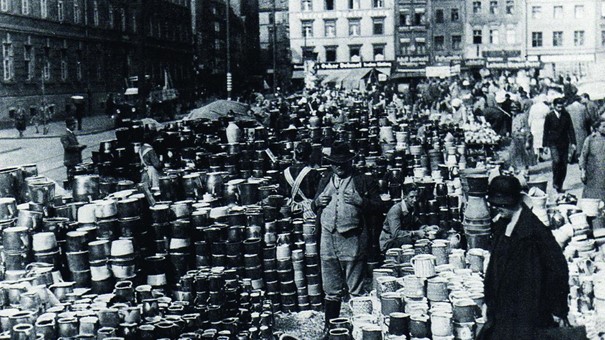
The Evolution of Polish Pottery: From Past to Present
Polish pottery has an intriguing history, and this article will take you on a journey through its evolution.
The history of Polish pottery dates back to ancient times and has been influenced by various cultural and historical factors.
The pottery produced in Bolesławiec is known for its unique patterns and vibrant colors, making it highly sought after by collectors and enthusiasts worldwide.
Over the years, Polish pottery has evolved from being a purely functional craft to a form of artistic expression.
From its humble beginnings in Bolesławiec to its current thriving industry, we will explore how Polish pottery has transformed over time.
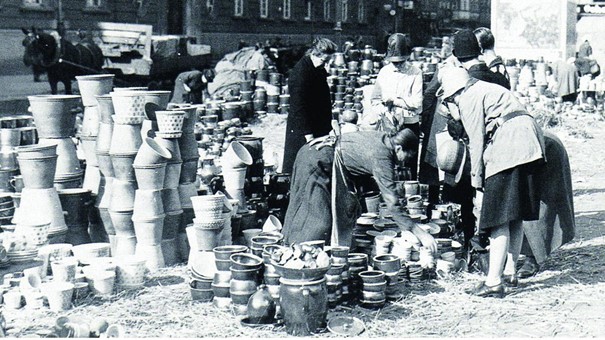
Photo from Zakladyboleslawiec
Key Takeaways
- Polish pottery originated as a local folk art tradition, with skilled artisans using carved potatoes as stamps to create intricate designs.
- Bolesławiec ceramics have a long history, dating back to the Middle Ages, and were highly valued for their artistic worth.
- The 1700s saw the development of unique designs and ornate decorations on Bolesławiec pottery, including the famous 'Large Pot'.
- Polish pottery experienced a revival in the late 1800s and early 1900s, with the introduction of new decorative styles like the iconic "Peacock's Eye" design.
- Despite facing destruction during World War II, Poland made significant efforts to rebuild its pottery industry in Bolesławiec, symbolizing the country's resilience and determination to preserve its cultural heritage.
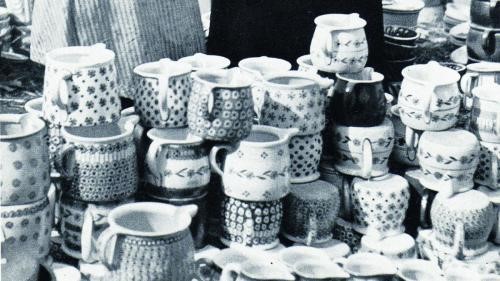
Photo from Zakladyboleslawiec
Humble Beginnings
What we recognize as Polish Pottery today initially emerged as a local folk art tradition. The first known pieces of this pottery, often referred to as "Bunzlauer" stoneware, were meticulously handcrafted by skilled artisans.
These early craftsmen employed a unique stamping technique using none other than humble potatoes to create intricate and eye-catching designs.
In the quaint workshops of Silesia, artisans would carve various patterns and motifs onto a potato. This carved potato would then serve as a stamp, dipped in dye, and pressed onto the pottery surface.
The result was a charming and rustic design that became synonymous with Polish Pottery. Although the technique originated from the necessity of finding an affordable yet effective way to decorate the stoneware, it soon became an art form in its own right.
This laid the foundation for the renowned art of Polish Pottery, which would evolve and flourish over the centuries, captivating admirers worldwide with its distinctive beauty and craftsmanship.
Oldest Recordings of Bolesławiec Ceramics
The oldest recordings of Bolesławiec ceramics take us back to the Middle Ages. Archaeological findings and historical sources have revealed that ceramic vessels were made in Bolesławiec during this time.
One notable pottery site was located on Piaskowa Street, which was active from the 16th to the mid-17th centuries.
At this pottery, a wide variety of practical utensils were produced. These included pots, jugs, bowls, plates, and pans. In addition to everyday items, the craftsmen also made figurines, piggy banks, and technical ceramics.
The pieces were adorned with different types and colors of glazes, some of which featured intricate artistic decorations. The early Bolesławiec ceramics were highly valued for their artistic worth.
These discoveries shed light on the rich history and craftsmanship of Bolesławiec ceramics. They provide a glimpse into the skills and creativity of the artisans who contributed to the development of this unique pottery tradition.
Progress of Polish Pottery in the 1700s
In the 1700s, Polish pottery in Bolesławiec went through an interesting period of development. During this time, there were wheel-turned jugs with unique designs.
These jugs had smooth or grooved bellies, covered in bronze glazing, which was typical for the local stoneware. They were decorated with tin details, like engraved dates and monograms.
As the late 1700s and 1800s rolled around, the jugs became even more ornate. Elastic overlays were added, featuring biblical, heraldic, animal, or plant motifs.
One famous creation from this time was the 'Large Pot' by Johann Gottlieb Joppe, which became a symbol of Bolesławiec.
This extraordinary creation stood over 2 meters tall and had a capacity of approximately 2000 liters, making it the largest vessel of its kind in the entire world.
The awe-inspiring pot quickly became synonymous with Bolesławiec, and its image was widely printed on postcards, firmly establishing its status as a symbol of the town.
Another important figure was Johann Gottlieb Altmann, who revolutionized local ceramics production.
He introduced the use of feldspar glaze and white clay, which propelled the technological advancement of Bolesławiec pottery.
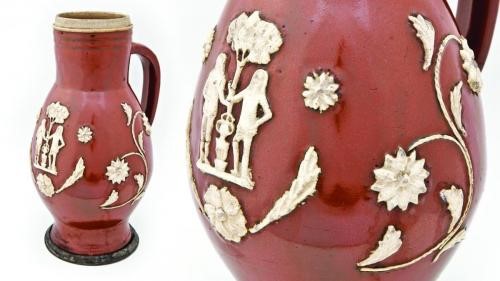
Photo from Zakladyboleslawiec
1800s-1900s: The Peacock’s Eye
The Ceramic Technical Training School, established in 1898, played a vital role in fostering the art's development.
At the start of the century, Bunzlauer pottery experienced a revival with the introduction of the Jugendstil movement, similar to Art Nouveau in Germany.
During this time, the the "Pfauenauge" or the iconic "Peacock's Eye" design in Polish pottery became its trademark decoration.
As the 1920s came around and the Art Deco movement gained popularity, there was a shift towards more vibrant colors in Bolesławiec pottery.
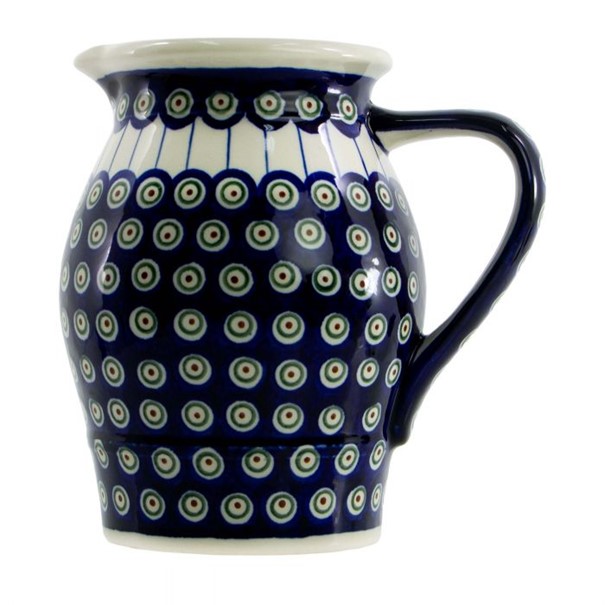
Photo from Zakladyboleslawiec
Polish Pottery in World War II
During World War II, Poland faced a tragic fate as it was invaded and ultimately divided between Nazi Germany and the Soviet Union.
The German invasion, which began on 1 September 1939, marked the start of the war in Europe.
Poland was swiftly occupied and subjected to brutal Nazi occupation policies, including the persecution and extermination of the Jewish population in the Holocaust.
Silesia was placed under German occupation and became a scene of heinous acts committed by both Nazi and Soviet forces against the local population.
Being situated in Silesia, the town of Bolesławiec became a target for destruction, obliterating most of the local pottery manufacturers.
This catastrophic loss dealt a significant blow to the ceramics industry in Boleslawiec, leaving it in a state of devastation.
After World War II, Poland made significant efforts to rebuild its pottery industry in Bolesławiec. Despite annexing the Silesia region and expelling most of the German population, the country was determined to revive the local economy and rejuvenate the pottery factories.
With resilience and determination, Poland focused on reconstructing the infrastructure and reopening these factories.
This effort not only aimed to provide employment opportunities but also aimed to preserve the long-standing tradition of Polish pottery.
The revival of the pottery industry in Bolesławiec symbolized Poland's determination to rebuild and reaffirm its cultural heritage in the aftermath of the war.
Polish Pottery Today
Polish pottery is a traditional art form that's still thriving today. Skilled artists individually handcraft and decorate each piece with intricate patterns and colors.
They use tiny sponges to stamp the designs onto the pottery. The process involves molding, decoration, and firing, resulting in durable and practical pieces that can be used daily.
Bolesławiec pottery, a type of Polish pottery, has evolved in design and quality. While it may not be as expensive as high-priced fine china and pottery, it isn't inexpensive.
The prices for mugs and cups range from twenty to forty U.S. dollars. Larger and more intricate pieces like bowls and teapots can cost anywhere from one to two hundred U.S. dollars.
Hand-painted pieces by recognized artists can even fetch prices close to five hundred U.S. dollars or more.
Despite the cost, Polish pottery continues to be cherished for its beauty, craftsmanship, and functionality. It's a testament to the rich artistic heritage of Poland and a beloved addition to any home decor.
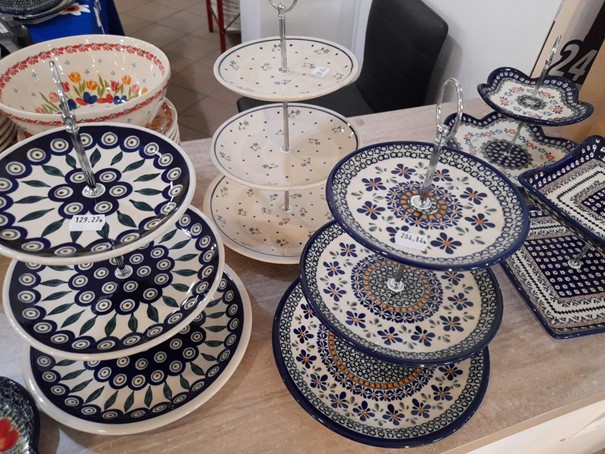
Photo from Zakladyboleslawiec
How Zaklady Ceramiczne "Bolesawiec" Started
Zaklady Ceramiczne 'Bolesawiec' is the largest and oldest manufacturer of Polish Pottery. It's rooted in the rich history and traditions of Bolesławiec stoneware.
The company's story began in 1946 when it was established as Bolesławieckie Zakłady Garncarsko-Ceramiczne, taking over the Reinhold & Co plant that had been in operation before the war.
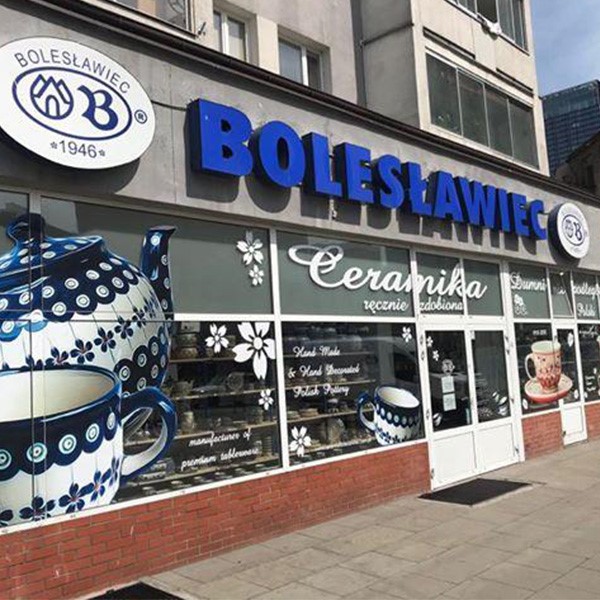
Photo from Zakladyboleslawiec
As the years went by, the company grew and became part of Bolesławieckie Zakłady Ceramiczne Przemysłu Terenowego in 1964.
However, it wasn't until 1980 that Zaklady Ceramiczne 'Bolesawiec' gained its independence and was authorized to use the town's name. This marked a turning point, leading to a period of success for Bolesławiec stoneware that continues today.
Zaklady Ceramiczne 'Bolesawiec' is known for its beautifully decorated and durable pottery. They offer many products, including dinnerware, baking dishes, serving dishes, kitchen accessories, vases, flower pots, and stoneware crocks.
With an annual production of approximately two million pieces, Zaklady Ceramiczne 'Bolesawiec' remains a leading force in the world of Polish Pottery.
The pottery produced by Zaklady Ceramiczne 'Bolesawiec' is loved by many for its unique designs and high quality.
Each piece is carefully crafted, reflecting the craftsmanship and attention to detail passed down through generations.
The stoneware isn't only aesthetically pleasing and functional, making it a popular choice for everyday use and special occasions.
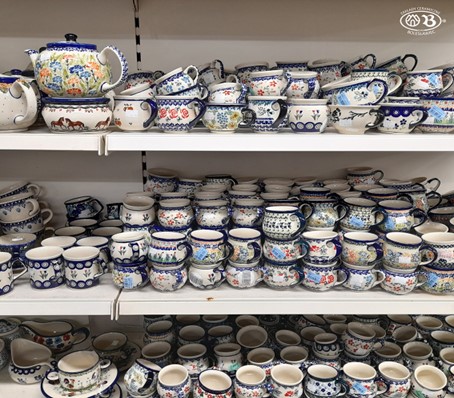
Photo from Zakladyboleslawiec
Final Thoughts
Polish pottery has a fascinating history that spans from the past to the present. It all began in Bolesławiec, where the art of pottery was first recorded.
Over time, this craft has flourished into a thriving industry, with Polish potters showcasing their unwavering skill and creativity.
The beauty of Polish pottery lies in its intricate designs and vibrant colors. These unique patterns continue to mesmerize people from all around the globe.
The craftsmanship behind each piece is a testament to this traditional art form's rich heritage and lasting legacy.
From the earliest recordings to the present day, Polish pottery has evolved, adapting to the changing times while preserving its authentic charm.
It has become a symbol of Polish culture and craftsmanship, acclaimed for its quality and beauty.
Today, Polish pottery is highly sought after by collectors and enthusiasts alike. Its appeal lies not only in its aesthetic appeal but also in the functionality of the pieces.
The evolution of Polish pottery is a story of passion, dedication, and artistic excellence. It showcases the enduring craftsmanship of Polish potters and reminds us of the beauty that can be found in traditional crafts.
Polish pottery continues to captivate the world, making its mark as a treasured art form that withstands the test of time.







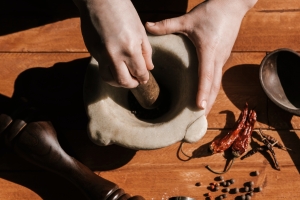



Validate your login
Sign In
Create New Account